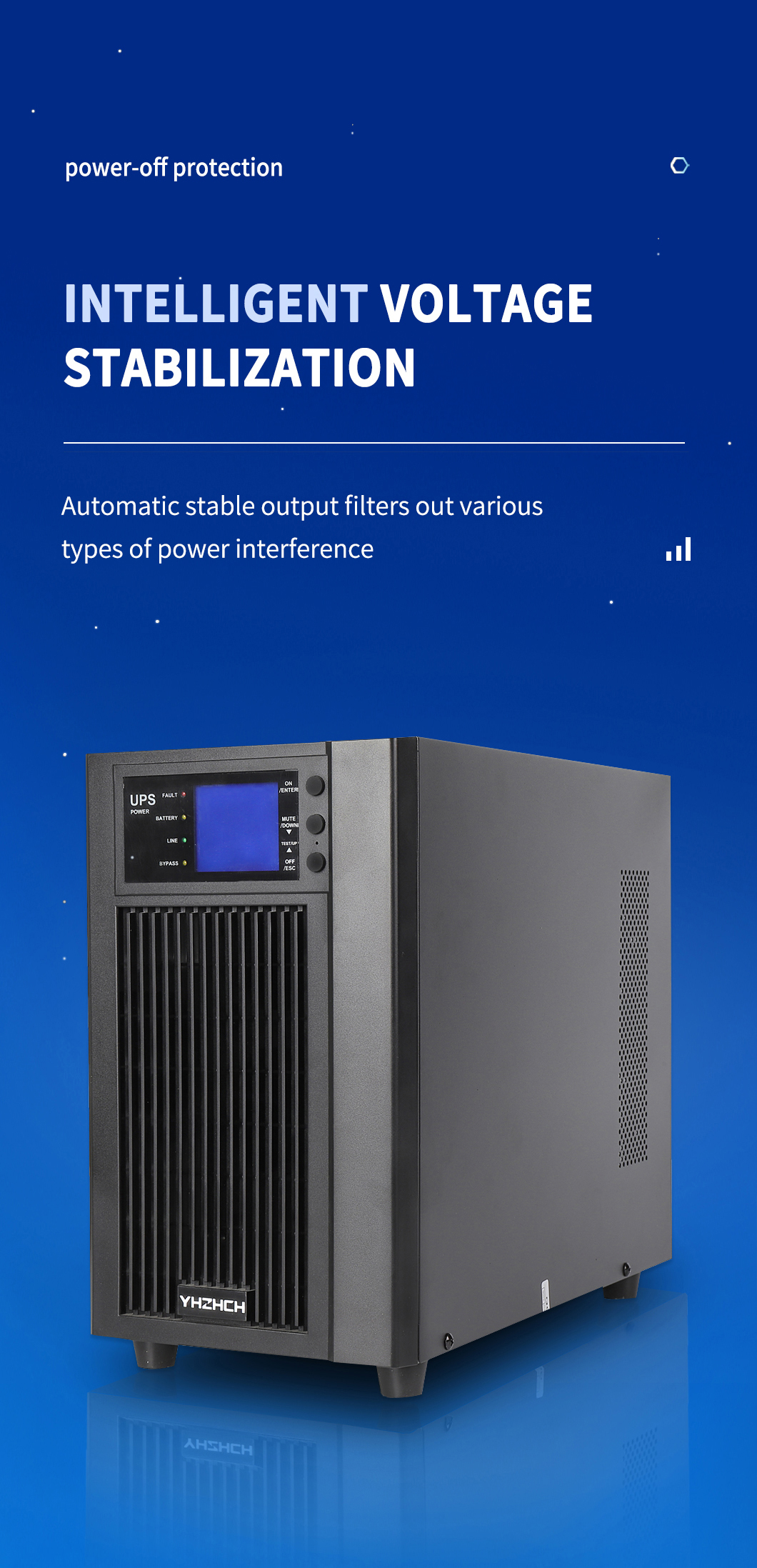To determine the charging current and voltage of the UPS power supply, it is necessary to comprehensively consider factors such as battery type, capacity, quantity, and the characteristics of the UPS power supply. The following are specific methods:
Determine based on battery type
Lead acid battery
Charging voltage: Generally, the float charging voltage of a single 12V lead-acid battery is set between 13.5V-13.8V, and the average charging voltage is between 14.2V-14.5V. If it is a battery pack composed of multiple batteries connected in series, the total charging voltage is the charging voltage of a single battery multiplied by the number of battery cells. For example, a 48V battery pack consisting of four 12V lead-acid batteries connected in series has a float charge voltage of approximately 54V-55.2V and an average charge voltage of approximately 56.8V-58V.
Charging current: It is usually determined by a certain proportion of the battery capacity, and the initial charging current of new lead-acid batteries may be set to 1/10 to 1/20 of the battery capacity (C/10- C/20). If the battery capacity is 100Ah, the charging current can be set between 5A-10A. As the charging process progresses, the charging current will gradually decrease.
lithium battery

Charging voltage: The charging voltage of lithium batteries in different chemical systems varies. Generally, the cut-off voltage for single cell charging of lithium iron phosphate batteries is around 3.65V -3.7V, while the cut-off voltage for single cell charging of lithium cobalt oxide and ternary lithium batteries is around 4.2V. When multiple lithium batteries are connected in series to form a battery pack, the total charging voltage is the cut-off voltage of a single battery multiplied by the number of batteries connected in series.
Charging current: The charging current is generally between 0.5C and 1C, where C is the rated capacity of the battery. For example, for a lithium battery with a capacity of 50Ah, the charging current can be set between 25A-50A. However, high current charging may affect battery life, and in practical applications, the charging current may be appropriately reduced according to specific circumstances.
Refer to the battery and UPS power manual
Battery manufacturers typically provide recommended charging voltage and current ranges, as well as suggestions for adjusting charging parameters at different ambient temperatures, in their product manuals.
UPS power supply manufacturers will also explain in their product manuals what types of batteries the UPS is suitable for, as well as corresponding charging parameter setting guidance. At the same time, some default charging parameter settings will also be provided, which are generally applicable but may need to be fine tuned according to the actual battery conditions used.
Consider environmental temperature factors
The ambient temperature has a significant impact on battery charging. Usually, as the temperature rises, the battery's charging acceptance capacity increases, but excessively high temperatures can accelerate battery dehydration and plate aging; When the temperature decreases, the charging efficiency of the battery will decrease. In order to ensure charging efficiency and battery life, many UPS power supplies have temperature compensation function.
Generally speaking, the setting range of temperature compensation coefficient is between -3mV/℃ and 5mV/℃ per cell. For example, for a set of 12V lead-acid batteries, the charging voltage can decrease by 3mV-5mV for every 1 ℃ increase in ambient temperature; On the contrary, when the ambient temperature decreases, the charging voltage should be correspondingly increased.
Adjust according to the actual charging situation
After setting the charging parameters for the first time, adjustments can be made by observing the charging status of the battery and the operation of the UPS power supply. For example, observe whether the battery generates severe heat during charging and whether there are signs of overcharging or undercharging.
If the battery charging speed is found to be too slow, the charging current can be appropriately increased after troubleshooting the battery itself; If the voltage of the battery rises too quickly or overheats during the later stages of charging, it may be necessary to reduce the charging current or adjust the charging voltage. At the same time, professional battery testing equipment such as battery internal resistance testers, charge and discharge testers, etc. can be used to more accurately understand the charging status and performance of the battery, thereby optimizing charging parameters.


